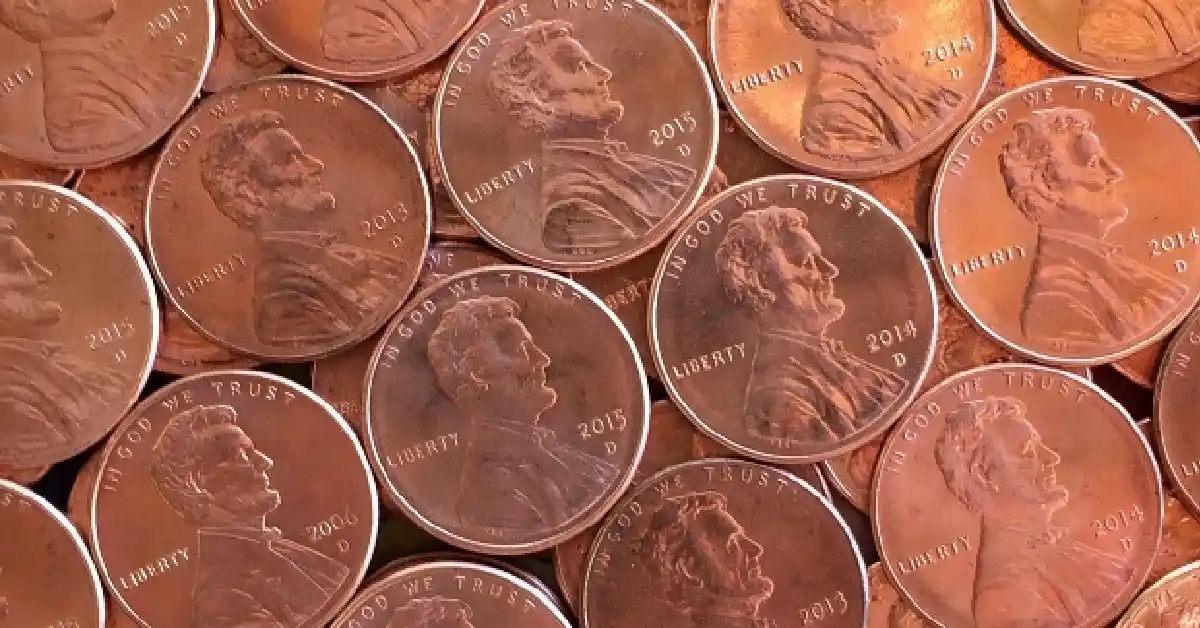Finance
Copper Pennies: A Complete Guide to History, Value, and Collecting

Introduction
What are copper pennies and what do they offer? Copper pennies are U.S. one-cent coins made primarily of copper before the composition changed to zinc in 1982. These coins are not only pieces of everyday currency but also valuable collectibles for coin enthusiasts and investors. Unlike modern pennies, which are mostly zinc with a thin copper coating, older copper pennies offer higher intrinsic metal value, historical significance, and potential returns for collectors. Whether you’re a numismatist (coin collector) or just curious about the spare change in your pocket, copper pennies carry a unique story and enduring worth.
1. Background and Evolution of Copper Pennies
The U.S. Mint introduced the first one-cent coin in 1793. Over the centuries, the design and metal composition evolved:
-
1793–1837: Pure copper cents.
-
1837–1857: Bronze cents (95% copper, 5% tin and zinc).
-
1857–1864: Smaller copper-nickel cents.
-
1864–1962: Bronze cents (95% copper, 5% tin/zinc).
-
1962–1982: Copper cents (95% copper, 5% zinc).
-
1982 onward: Zinc cents with copper plating (97.5% zinc, 2.5% copper).
This shift from copper to zinc was due to rising copper costs, which made it more expensive to produce pennies than their face value.
2. Key Features of Copper Pennies
-
Composition: 95% copper and 5% zinc (pre-1982).
-
Weight: Approximately 3.11 grams.
-
Appearance: Richer, darker tone than modern zinc pennies.
-
Durability: More resistant to corrosion compared to zinc.
-
Collector Value: Higher than face value due to copper content.
3. Detailed Explanation of Each Feature
a) Composition
The high copper content makes these pennies distinct from modern zinc versions. Pure copper is both valuable and durable, giving older pennies intrinsic worth.
b) Weight
Copper pennies weigh more than zinc pennies. This difference helps collectors easily distinguish between the two types.
c) Appearance
Over time, copper pennies develop a patina—a natural darkening that adds character and uniqueness to each coin.
d) Durability
Unlike zinc pennies that corrode when scratched, copper pennies hold up better against wear, making them more desirable to collectors.
e) Collector Value
The metal value of a copper penny can exceed its face value. Some rare dates or errors also fetch high prices in the collectors’ market.
4. Copper Pennies vs. Modern Pennies
| Feature | Copper Pennies (Pre-1982) | Modern Pennies (Post-1982) |
|---|---|---|
| Composition | 95% copper, 5% zinc | 97.5% zinc, 2.5% copper |
| Weight | 3.11 g | 2.5 g |
| Durability | Higher | Lower (prone to corrosion) |
| Intrinsic Value | Higher than face value | Equal to face value |
| Collectible Appeal | Strong | Limited |
5. Benefits for Different Types of Users
-
Collectors: Valuable additions to coin collections, especially rare dates.
-
Investors: Copper content offers intrinsic metal value, acting as a hedge against inflation.
-
Hobbyists: Easy to find and collect from everyday circulation.
-
Educators/Students: Useful for teaching U.S. history and economics.
6. Security and Authenticity Concerns
Counterfeiting is rare with copper pennies due to their low face value. However, collectors should still watch out for:
-
Altered dates (e.g., making a 1943 steel cent look like a copper one).
-
Fake mint marks added to increase value.
-
Corroded zinc pennies passed off as copper due to discoloration.
Always verify authenticity through weight, sound tests, and professional grading.
7. Future of Copper Pennies
As inflation rises and production costs increase, discussions continue about eliminating the penny entirely. If this happens, copper pennies may gain even more collectible value due to their historic significance.
8. Value and Pricing Structure
-
Face Value: 1 cent.
-
Metal Value: About 2–3 cents depending on copper prices.
-
Collector Value:
-
Common dates (pre-1982): 2–5 cents.
-
Rare dates/errors (e.g., 1943 copper cent): Thousands to millions of dollars.
-
9. Pros and Cons of Copper Pennies
Pros
-
Higher intrinsic value than modern pennies.
-
Durable and long-lasting.
-
Collectible appeal with historical importance.
Cons
-
Heavier and bulkier to store in large amounts.
-
Not all copper pennies have significant resale value.
-
Melting them for copper is currently illegal in the U.S.
10. Final Conclusion: Are Copper Pennies Worth Collecting?
Yes, copper pennies are worth collecting—both for their historical significance and for their metal value. While not every coin will make you rich, holding onto copper pennies is a smart move for collectors, investors, and history enthusiasts alike. Their durability and connection to U.S. history make them far more valuable than modern zinc pennies.
11. FAQs
Q1: What years are copper pennies?
All U.S. pennies minted before 1982 are mostly copper, though some 1982 pennies are zinc.
Q2: How much is a copper penny worth today?
On average, 2–3 cents in copper value, with some rare dates worth much more.
Q3: Can I melt copper pennies for profit?
No. It’s illegal to melt U.S. coins for their metal content.
Q4: How can I tell if my penny is copper or zinc?
Weigh it—copper pennies weigh 3.11 g, zinc pennies weigh 2.5 g.
Q5: Are copper pennies rare?
Common pre-1982 pennies are not rare, but certain dates and error coins are highly valuable.
Q6: Will copper pennies become more valuable in the future?
Likely yes, especially if the U.S. phases out pennies or copper prices rise.

-

 Must Read4 months ago
Must Read4 months agoThe Truth Behind the Direct Fairways Lawsuit: What You Need to Know
-

 Business4 months ago
Business4 months agoTop Chartered Accountants Benefits: Guide, Tips, FAQs & More
-

 Tech4 months ago
Tech4 months agoblogsternation .com: Complete Beginner’s Guide, Benefits, and FAQs
-

 Tech3 months ago
Tech3 months agoHow to Upgrade Graphics Driver: Boost Speed, Fix Issues & Enhance Gaming
-

 Sports4 months ago
Sports4 months agoHow Many Quarters in Football? A Complete Guide to Game Structure and Timing
-

 Education5 months ago
Education5 months agoOxford Acceptance Rate: What It Means, Why It Matters, and How to Beat It
-

 Must Read4 months ago
Must Read4 months agoEscalade Must Have Accessories for the Ultimate Cadillac Experience
-

 Business4 months ago
Business4 months agoUnlocking the Truth About gomyfinance.com Credit Score


















